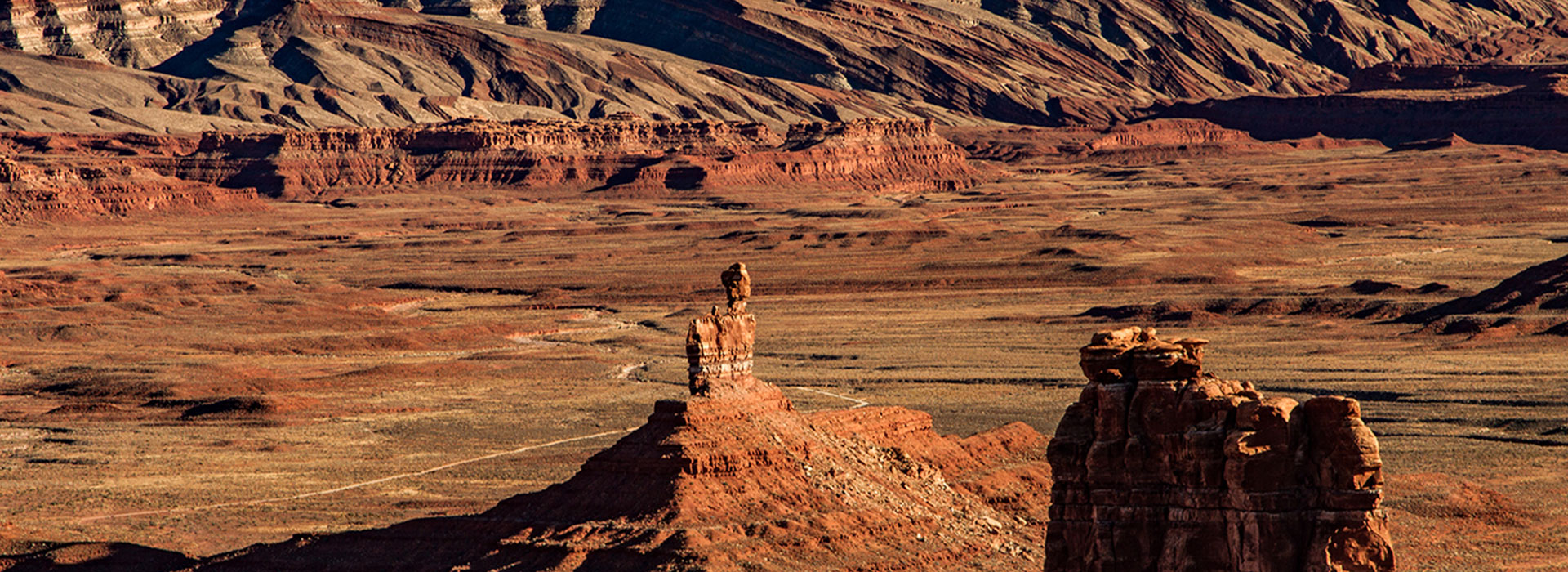Bears Ears is Back
By Doug Schnitzspahn

When President Barack Obama created Bears Ears National Monument in southeastern Utah on Dec. 28, 2016, he didn’t just protect a priceless natural landscape—for the first time in U.S. history, he gave Native people a say in managing a national monument on public lands they have used for generations. Created by the authority of the Antiquities Act, Bears Ears would protect not just the area’s incredible geological features—including the eponymous buttes—but also 100,000 archaeological sites and areas still used by tribes today.
A year later, President Trump eviscerated the monument, cutting it from 1.35-million acres to just 201,397 acres, despite protest from the tribes, local conservation groups, and the outdoor industry, which moved the Outdoor Retailer show from Salt Lake City to Denver due to Utah lawmakers’ insistence on selling off public lands and reducing protections on them. While the decision to designate the monument incorporated years of public input, Trump’s reduction of it came after a brief meeting with disgruntled conservative politicians and little to no respect for the tribes.
“They’ll destroy irreplaceable pieces of history,” monument advocate Shaun Chapoose of the Ute tribe told NPR after Trump slashed Bear’s Ears. “And I’m afraid that, you know, they’ll try to speed up the process to do fuel development as far as fossil fuels without following legal process. And that always leads to disaster.”
When Joe Biden defeated Trump last year, the reinstatement of the monument (as well as parts of nearby Grand Staircase-Escalante National Monument) rose to the top of the agenda, with some thinking he might do it as soon as he took office. The new President delivered on Oct. 8, restoring Bears Ears and Grand Staircase-Escalante to their original sizes and reinstating protections to the Northeast Canyons and Seamounts Marine National Monument. “Today’s announcement, it’s not just about national monuments,” said Interior Sec. Deb Haaland, who is a member of Laguna Pueblo. “It’s about this administration centering the voices of Indigenous people and affirming the shared stewardship of this landscape with tribal nations.”
The return of the monuments brought much celebration to the tribes and the entire outdoor community, but also a sense that it will require constant vigilance to keep these lands protected and educate the public on the importance of connecting them to the people who have called them home long before the U.S. existed. To that end, local conservation group Friends of Cedar Mesa (FCM) has been advocating for the monument and working to teach visitors about the cultural and environmental values of the place since 2010 when it was founded by Mark Meloy, a former BLM employee who wanted to see greater protections for a place he loved that was in danger of being overrun.
“Our community couldn’t be more thankful for the permanent protection and restoration of the monument by the Biden administration, but the hardest part of the journey is just beginning,” says Joe Neuhof, FCM executive director. “We must support tribes in collaborative management while working on the ground to help reduce impacts by educating as many visitors as possible on how to visit with respect.”
In order to live up to that mission, FCM operates the Bears Ears Education Center in Bluff, Utah. Here visitors can learn how to visit the monument respectfully and hopefully carry some of that knowledge and love for the place on to others. “Caring for a sacred cultural landscape is a responsibility we all share, and responsible recreation is something we can all do to make a difference,” says Neuhof.
Former FCM executive director Josh Ewing, a photographer and climber, was an instrumental force in convincing President Obama to originally designate the monument and his images have brought Bears Ears into the public eye. FCM has generously shared some of his photography of Bears Ears with us and we would like to share them with the Outdoor Retailer community, both as a celebration of this sacred landscape and a reminder that we must continue to work to protect it.
Read The November 2021 Edition